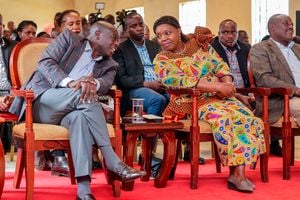How to avoid falling victim to fraudsters
Before you invest in buying land, you should follow the following steps to avoid being conned/scammed:
Ground verification
The first step you should take is to confirm whether the land truly indeed exists, this is known as ground verification. It is your right as a land buyer to confirm if the land exists. The seller armed with a map will visit the land with you, the buyer, for a survey. It is important to note that the expenses of the ground verification are paid by the seller since he is still in possession of the land or on other instances based on agreements, both parties share costs.
Do a search at the Land Registry
The most important step in the due diligence process is doing a search. For a land search, you will need to secure a copy of the title deed of the land you intend to buy, a copy of the identity card and a copy of the KRA PIN of the seller. You can either do this online or proceed to the Land Registry of the area where the land is located, and request a search application form in which you will fill in the details and attach copies of the three documents.
Land rates
A land buyer needs to confirm with the county governments whether there are any unpaid land rates on the land. If there are any prevailing land rates, you should agree with the seller on who will clear the debt and when. The land cannot be sold or transferred if there are unpaid rates.
Land map
The next step should be to obtain a map of the land. Obtain at least two maps of the property from the Land Registry or a local surveyor. One of the maps should be drawn to scale and show the exact dimensions of the land or mutation, while the other should give an overview of the land and its adjoining properties.
You will then go to the actual location of the land to authenticate everything on the map and if everything checks out, you can proceed to erect the beacons.
Sale agreement
The buyer and seller can now get down to the business of drawing up a sale agreement, which is done by a lawyer. A sale agreement basically covers all the factors that will guide you through this process, which includes price, method of payment, and the terms of payment. This is important because it will protect you legally if either party fails to honour their part of the agreement.
After this, you can obtain clearance from the Land Control Board, mainly for the sake of transparency.
Land Control Board
Land control boards meet once a month; you can book an appointment. They give consent for the land to be sold and protect the seller from self-destruction. This involves a situation where the land sold belongs to the community or the land is sold without the agreement of the spouse.
Land valuation, stamp duty and post-purchase activity
Once the Land Control Board gives the go-ahead, you must apply to the Land Registry where the land is located for a land valuation and the Land Registry will calculate the stamp duty payable, which is often based on the value of the land and its location.
Secure transfer documents
This occurs when the seller signs the land transfer forms after the buyer pays the agreed amount. The buyer goes to the Ministry of Land after receiving consent from the Land Control Board, land search, clearance from municipal/county council, KRA pin, passport photos, old title deed and sale agreement for the land ownership to be changed.
Once this is done, you can carry out a search at the Land Registry to confirm that the land has actually been transferred to you and you are indeed the legal landowner.





